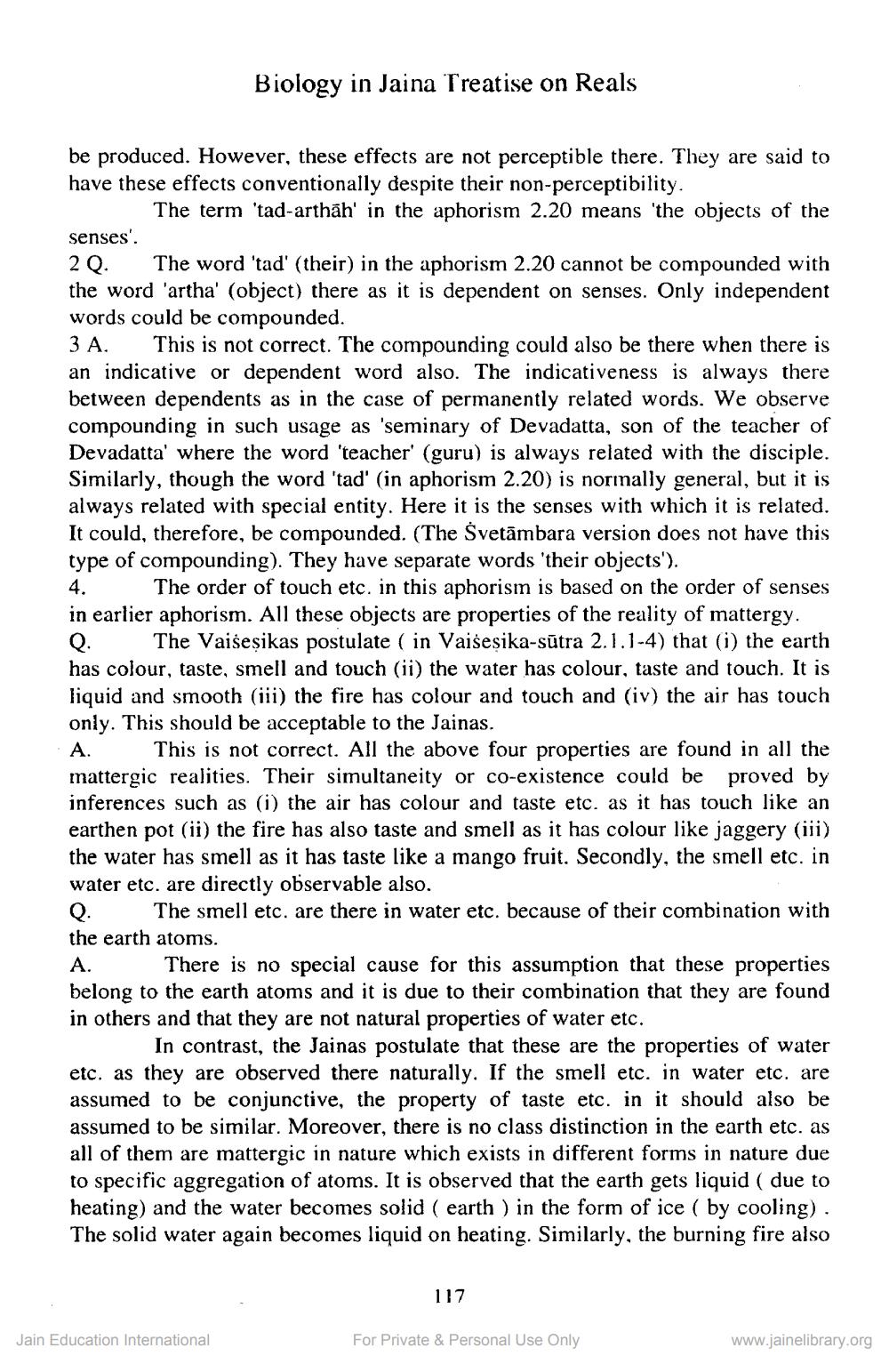________________
Biology in Jaina Treatise on Reals
be produced. However, these effects are not perceptible there. They are said to have these effects conventionally despite their non-perceptibility.
The term 'tad-arthah' in the aphorism 2.20 means 'the objects of the
senses'.
2 Q. The word 'tad' (their) in the aphorism 2.20 cannot be compounded with the word 'artha' (object) there as it is dependent on senses. Only independent words could be compounded.
3 A. This is not correct. The compounding could also be there when there is an indicative or dependent word also. The indicativeness is always there between dependents as in the case of permanently related words. We observe compounding in such usage as 'seminary of Devadatta, son of the teacher of Devadatta' where the word 'teacher' (guru) is always related with the disciple. Similarly, though the word 'tad' (in aphorism 2.20) is normally general, but it is always related with special entity. Here it is the senses with which it is related. It could, therefore, be compounded. (The Svetambara version does not have this type of compounding). They have separate words 'their objects').
4.
Q.
The order of touch etc. in this aphorism is based on the order of senses in earlier aphorism. All these objects are properties of the reality of mattergy. The Vaiseṣikas postulate (in Vaiseṣika-sūtra 2.1.1-4) that (i) the earth has colour, taste, smell and touch (ii) the water has colour, taste and touch. It is liquid and smooth (iii) the fire has colour and touch and (iv) the air has touch only. This should be acceptable to the Jainas.
A.
This is not correct. All the above four properties are found in all the mattergic realities. Their simultaneity or co-existence could be proved by inferences such as (i) the air has colour and taste etc. as it has touch like an earthen pot (ii) the fire has also taste and smell as it has colour like jaggery (iii) the water has smell as it has taste like a mango fruit. Secondly, the smell etc. in water etc. are directly observable also.
Q. The smell etc. are there in water etc. because of their combination with the earth atoms.
A. There is no special cause for this assumption that these properties belong to the earth atoms and it is due to their combination that they are found in others and that they are not natural properties of water etc.
In contrast, the Jainas postulate that these are the properties of water etc. as they are observed there naturally. If the smell etc. in water etc. are assumed to be conjunctive, the property of taste etc. in it should also be assumed to be similar. Moreover, there is no class distinction in the earth etc. as all of them are mattergic in nature which exists in different forms in nature due to specific aggregation of atoms. It is observed that the earth gets liquid (due to heating) and the water becomes solid (earth) in the form of ice (by cooling). The solid water again becomes liquid on heating. Similarly, the burning fire also
Jain Education International
117
For Private & Personal Use Only
www.jainelibrary.org




